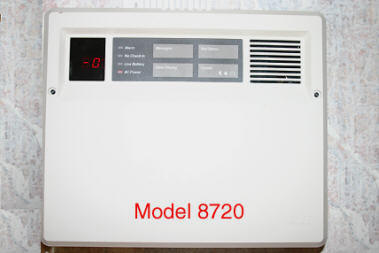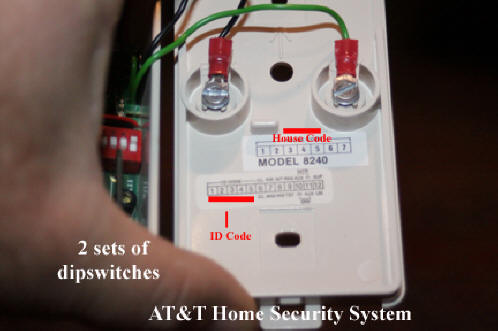
Shared Knowledge
"AT&T Home Security System - Adding a Detector"
21 December 2010

Summary: adding a detector or wireless keypad to an AT&T home security system is not difficult at all but does require you set 2 banks of dipswitches inside the detector, universal transmitter or wireless keypad.
Adding an additional detector to an established AT&T home security system is not difficult. In the case of intrusion, once you have a universal transmitter, all you need do is procure a magnetic reed switch, which are readily available from many Internet sources. Note that you want a magnetic reed switch, which is normally closed, meaning that when the switch is properly installed on a door or window, the switch is closed to the attached detector. When the window or door is opened, the magnetic reed switch opens. Magnetic switches used in security systems almost always of the normally closed type. Because the switch is normally closed, should a burglar try to get around the system by cutting switch wires, the attached detector will alarm just as if the door or window had been opened. Also note that you can attach multiple reed switches to one universal transmitter such that one transmitter can serve to protect 2 adjacent windows
To add a detector, you simply need to hardwire your existing house ID into the house ID dipswitches of the detector and then checking the ID card of your existing system, select an detector ID which is not being used and hardwire it into the detector ID dipswitches.
ID card This card, completed by the installer, usually stored in a pocket on the back of the CC, shows the device ID for all current system detectors. If you are new to the system, check the pocket, as the card could have slipped sideways and be out of sight.

House ID The easiest way to determine your house ID is to open an existing device (put system into "Test\Demo" mode first) and simply copy down the switch settings for the house ID. Then using the copied ID, set the house ID switches in the new detector. All AT&T security devices originally came with a 2 small labels attached to the inside of the device, showing the house ID dip switch and the device ID code dip switches.

Device ID Every system detector has a unique device ID hard coded or wired into it via a set of device ID switches.
Looking at the device ID set of switches, each switch represents one binary number. In decimal, "places" in a number go 1, 10, 100, 1000, 1000 and so on. In binary, the sequence of places go 1,2,4,8, 16, 32, 64, 128, 256 and so on where the next number is just 2 times the previous number.
In binary, the position of the switch, reading from left to right, signifies its value.
In every system device, there are 5 switches dedicated to device ID, which means that the total number of devices in the system can be 31 or 1+2+4+8+16.
Switch
1
2 3
4 5
Corresponding
Binary Value
1
2 4
8 16
In the AT&T Home Security System if an individual switch of
the device ID is set to “ON” or "up". this means that particular bit
is set to 0.
So as an example, if I wanted to have a
universal transmitter have an device ID of 16, I would set the ID switches as follows:
1
2 3 4
5
ON
ON ON
ON Off
0
+ 0
+ 0 + 0 +
16 = 16
Or to set to device ID 15
1
2 3
4 5
OFF
OFF OFF
OFF ON
1 + 2 + 4 + 8 + 0 = 15
Note that switch 6 should be set “ON”, 7 to “OFF” and 8 to “ON”.
Dipswitches normally are moved up or down via a pencil tip.
Integrating the new detector into your system. Once you have set device dipswitches, mounted the device and any necessary magnetic reed switches, at battery insertion and case closure, the new device will automatically be detected by the central controller (CC) within 8 hours. Nothing need be done at the CC to add a new detector.
Click here for more AT&T Home Security System.